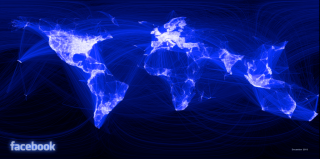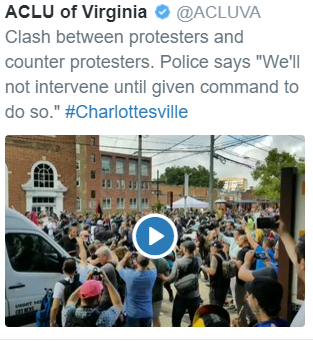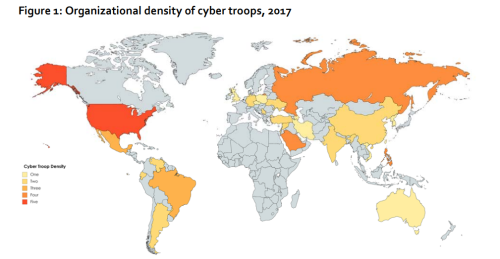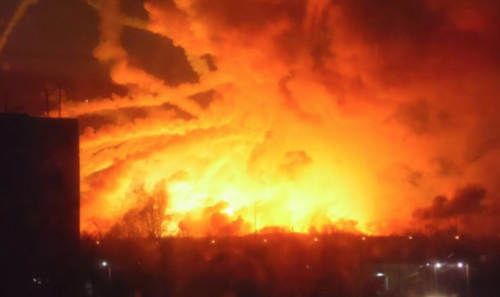John Robb's Blog, page 3
October 6, 2017
Las Vegas, Conspiracies and ISIS
Social networks abhor vacuums. They fill them with conspiracies.
The Las Vegas terrorist attack is a good example of this. Why would a mild mannered accountant suddenly become a terrorist? What was the motive? So far, there is no definitive evidence or explanation.

Aftermath of Las Vegas Attack
The inevitable result? Conspiracies. Truckloads of them.
In the midst of this rampant speculation, one simple answer stands out. ISIS.
Surprisingly, ISIS immediately claimed the attack and the attacker despite the strong chance it would be immediately disproved upon investigation. They then reiterated the claim in the newsletter Naba.
"A soldier of the caliphate attacked a gathering of 22,000 Americans at a concert in the city of Las Vegas, resulting in nearly 60 killed and 600 injured. Brother Abu Abdul Bar stationed himself in a room on the 32nd floor of a hotel overlooking the concert and opened fire continuously on the crowds using 23 firearms and more than 2,000 bullets and died, may God accept him, after running out of ammunition." In their account, Paddock converted to Islam 6 months ago and this attack was his oath of fealty to the Caliphate.
Is this a valid explanation for the attack? It may be. Here's why:
False, easily disproved claims would be very risky to ISIS. ISIS like all groups who rely on social networking, are very careful with their reputation. It is very difficult to build trust online and once it is lost, the result is catastrophic.
History proves this to be true: Rukmini Callimachi (the correspondent from the NYTimes that covers ISIS) demonstrated that ~ 95% claims made by ISIS have been verified to be truthful.
Also, Paddock's method of conversion and activation is very similar to the new mechanism that ISIS pioneered that I wrote about last year. In exchange for fealty (demonstrated by an attack), ISIS offers redemption (for life lived badly) and brotherhood (for those who are isolated and w/o meaning in their lives). Paddock fits that profile.
Sincerely,
John Robb
PS: This method of activation and the fact he set up video cameras suggests that Paddock might have live streamed his attack to the Internet. Look for that.
September 22, 2017
The Long Night Ahead
Facebook just declared war against "disruptive" information. In addition to hundreds of new human censors, they are training AI censors capable of identifying and deleting 'unacceptable' information found in the discussions of all two billion members in real time. This development highlights what the real danger posed by a socially networked world actually is.
The REAL danger facing a world interconnected by social networking isn't disruption. As we have seen on numerous occasions, the danger posed by disruptive information and events is fleeting. Disruption, although potentially painful in the short term, doesn't last, nor is it truly damaging over the long term. In fact, the true danger posed by an internetworked world is just the opposite of disruption.
This danger is an all encompassing online orthodoxy. A sameness of thought and approach enforced by hundreds of millions of socially internetworked adherents. A global orthodoxy that ruthless narrows public thought down to a single, barren, ideological framework. A ruling network that prevents dissent and locks us into stagnation and inevitable failure as it runs afoul of reality and human nature.
This ruling network already exists. It already has millions of online members and it is growing and deepening with each passing day -- extending its tendrils into the media, the civil service, tech companies, and academia. There's little doubt that over time it will eventually exert decisive influence over the entire government as well.
However, in order to exert authoritarian control over our decision making, it needs control over the flow of information in our society. Merely controlling the online debate is insufficient. For real power, the ruling network needs to control the information flows on our information infrastructure -- Facebook, Google, and Amazon -- and that's exactly the power it is now getting.
However, as large and powerful as this network already is, I still believe this future is reversible. We still have a short time before a long night descends across the world.
Sincerely,
John Robb
Writing on a cool New England afternoon. Feeling a bit like Hayek today.
PS: As if on cue, authoritarianism that diminishes the role of the individual is in the wind:
a majority of US students now oppose free speech on campus.
a free fall in support for democracy as a preferred form of governance among young people.
a majority of young people now oppose capitalism.
September 18, 2017
Will Facebook become the World's Most Powerful Government Contractor?
Facebook, with a COMPLETE social graph, becomes more than an advertising platform. It becomes an arm of government.

Facebook's Global Social Network Visualized
Here's how. Facebook recently passed:
2 billion monthly users.
That’s~70% of the 2.8 billion Internet users living outside of China/Russia (they use a different social networking system).
With slowing rates of growth for Facebook and the Internet (due to saturation), Facebook is likely to hit 3.5 billion monthly users by 2025.
The Complete Social Graph
At 3.5 billion users in 2025, Facebook’s social network will be more than half of the 6.5 billion people living outside of China/Russia. That’s a network that is large enough and deep enough to:
create a global census that can “see” nearly everyone on the planet , even if they don’t have a Facebook account.
enable real-time tracking on nearly everyone on the planet using smartphone GPS data and ancillary information (mentions of location/who you are with/pictures).
create the largest micro-targeting database on earth, from pictures to posted links to likes. Details on the interests and desires of billions of people.
What Does Facebook do with a Complete Social Graph?
The simple and straightforward answer is to build a very profitable advertising platform. However, the success of that advertising platform will be based on the ability of Facebook to avoid intrusive government regulation. To accomplish that, Facebook will develop services it can provide governments to better secure, control, and manage their citizens in a volatile global environment. In exchange for these services, Facebook will avoid regulations that will limit its ability to make money. Here’s more detail on the services it could provide:
Surveillance. The ability to ID anyone using facial recognition AIs (trained on the trillions of photos uploaded to the platform) and then track their movements globally. Border security and access control (buildings and government services). Tracking movement domestically (from CCTVs to Fastlane pics).
Censorship. The ability to limit domestic political conversations to those approved by the government. As the primary source of news in nearly country (outside of China), Facebook has the ability to limit sources to approved channels, prevent the discussion of banned topics, and steer conversations in subtle ways.
Counter-terrorism. Facebook will peer into private conversations and do the network analysis to ID potential extremists. It will also actively sabotage or intervene in terrorist/extremist recruiting networks to damage their effectiveness in securing recruits. Facebook now has the ability to offer NSA scale services, with better data, to nations around the world.
Alt Right vs. Alt Left, Cajun Navy, Experts vs. Pilots, Tolerance for Disinfo
Some random items of interest:
Alt Right vs. Alt Left (Vice). The US is now ground zero in an open source war for the future of democratic governance. 'Whatever happens next, the genie is out of the bottle, and intelligence and surveillance capabilities that once belonged only to militaries and state spooks are now available to anyone with a high-speed internet connection.' Quotes from Singer and Robb.
Global Guerrilla resilience (Houston Chronicle)
"I downloaded the app. And suddenly, I was part of the Cajun Navy.
"After two minutes of training, I was talking to people desperate for help."

BTW: the app they were using is called Zello. It turns your smartphone into a PTT (push to talk) walkie talkie. Here's another app like this, built by a former Green Beret, called Voxer.
Skin in the game (New Yorker). It's important to note that unlike most experts, pilots live (or die) with the consequences of their decisions. This makes them very unforgiving of poor decision-making.

Algorithmic warfare (Gizmodo). Uber's "Greyball" -- An algorithm built to thwart police harassing Uber drivers. 'Greyball showed officials “ghost cars” in a fake version of the app in an attempt to dodge regulators and also allegedly created geo-fences around potential investigative areas. The ride-sharing service also reportedly traced user credit card information and searched social media accounts in an effort to track down potential investigators. And when Uber figured out that officials were using burner phones, employees looked up the device numbers of the cheapest ones on sale at local electronics stores, “which were often the ones bought by city officials, whose budgets were not sizable.'
Disinfo warning (via Bloomberg) The former deputy commander of the Department for Active Measures and Disinformation in the Soviet-directed Czechoslovak intelligence service (now a university prof in the US) on fake news. "To create the kind of disinformation that changes the world, he told me, you need a story that’s at least 60, 70 or even 80 percent true."
My take: We complain about disinformation today, but we've been embracing establishment disinfo for decades... from WMDs to a blameless financial crisis. We accepted it when we were told that transferring a trillion dollars a year in manufacturing to China wouldn't hurt us economically or when we're told America is moving ahead economically when we haven't seen an increase in median income for 40 years (outside of the DC area) or that nation building in Afghanistan is the way forward when there is no chance of it ever working.
In short, we don't have any defenses against disinfo today because we've been fed a steady diet of it for decades.
September 15, 2017
The OODA loop of Trump's Insurgency has been Smashed
Trump is in the White House today because an open source insurgency put him there. I first wrote about Trump's open source insurgency a year and a half ago (February 2016). At that point, it was already apparent Trump was very likely to win not just the primary, but the election.
However, as prescient as my article was, I did get the plausible promise -- the simple goal the effort that unites all of the disparate interests, the goal that animates an insurgency -- wrong. At the time, I thought it was about representing forgotten interests (an error many writers are still making).
Instead, the real uniting goal of Trump's insurgency was "opposition to a failed establishment"
That goal held the insurgency that put him in office together, despite gaffes, scandals, leaks, etc that would have ended the political career of any other candidate. It was also a goal that allowed the insurgency to continue after winning the election. In most cases, once the goal has been accomplished (i.e. remove Mubarak), the insurgency evaporates.
The reason it didn't: the media.
The media is the voice of establishment interests (social, economic, and national security). It locks establishment interests in place. It also explained away failure after failure (nutty Chinese trade policy, lie that led to Iraq war, unpunished financial crisis, etc.) of the US establishment, as if it never occurred.
The media kept the insurgency alive through its overwhelming opposition to the Trump Presidency and Trump helped keep it alive by provoking the media at every turn. The alignment of this very public struggle with the plausible promise of the insurgency kept Trump's support at about ~40% (and more than 50% in more than half of all Congressional districts nationally).
The end of the Insurgency
That insurgency is now over. Its OODA loop is smashed.
Worried that Trump would end existing US spending/policies (largely, still geared to cold war priorities), the senior military staff running the Trump administration launched a counter-insurgency against the insurgency. They have been successful (if only they were half as good fighting against real world insurgencies). Here's how:
Former generals took control of key staff positions.
They purged staff members that were part of the insurgency and tightly limited access to Trump.
Finally, and most importantly, they took control of Trump's information flow.
That final step changed everything. General Kelly, Trump's Chief of Staff, has put Trump on a establishment-only media diet. Further, staff members are now prevented from sneaking him stories from unapproved sources during the day (stories that might get him riled up and off the establishment message).
The impact has been immediate. As Maggie Haberman of the New York Times (Trump talks to her daily) says, "this is definitely true re the media diet, and part of what aides have described as a more sanguine POTUS."
In short, by controlling Trump's information flow with social media/networks, the generals smashed the insurgency's OODA loop (observe, orient, decide, act). Deprived of this connection, Trump is now weathervaning to cater to the needs of the establishment (as seen with his new stance on DACA and the Wall).
The insurgency appears to be dead.
If this is true, what can we expect now?
Trump's popularity will plunge into the 20's as he mainstreams -- large segments of the insurgency will walk away permanently and those who have opposed him will continue to oppose him (he won't get any credit for mainstreaming). At support in the mid twenties, the stranglehold that the insurgency has on Republican Congressman will end (impeachment/removal?) and rallies will become impossible (too many angry people).
JMR
PS: Trump's insurgency was composed of many different groups, with very different reasons for joining. This makes it impossible to claim that his election was based on the desires of any single group of participants. For example: Russian hackers were also minor contributors to this insurgency, and the because it was an open source insurgency, their contributions were welcomed.
August 23, 2017
American Politics: Bad Boys vs. Mean Girls
Here's a framework for understanding how social networking is changing US politics. It's raw, simple and (hopefully) useful.
_______
The political parties and the media aren't the primary actors in the US political system anymore. Increasingly, politics is being waged online by networks. A fight between two powerful and very different online social networks (I gave them names that are both descriptive of how they operate and easy to remember):
The bad boys (similar to a gang or tribe) network grew in support of Donald Trump. It proved innovative and fast enough to circumvent first the Republican party's and then the media's control of the electoral process. It was decisive to his victory.
The mean girls (similar to a social clique or ruling aristocracy) network solidified in response to Trump's unexpected victory. Its cohesion and single mindedness neutered the Trump administration even before he took the oath. It's FAR more effective than the Democratic party and the media at exercising political power.
The battle between these networks is evolving rapidly. For example, when a few small extremist groups from the bad boy network recently attempted to take control of the network through an organized protest in Charlottesville, they were roundly defeated and driven to ground by actions orchestrated by the mean girls network.
Bad Boys vs. Mean Girls
The real differences between these networks can be seen in how they organize themselves and how they fight:
Bad boys. A loose decentralized network (populist and alt right, etc.). It has one organizing principle: disrupt the status quo. This network fights like an open source insurgency composed of many small groups and individuals acting independently. It disrupts from the shadows. It's opportunistic, disorganized, and aggressive. It misleads, angers, and intimidates. It scores victories by increasing fear, uncertainty, and distrust.
Mean girls. A tightly interconnected network (blue check Twitter and alt left, etc.). It has one organizing principle: repel the barbarians. This network fights like a ruling clique , albeit vastly larger than we have seen historically due to the scaling effects of social networking. This network openly connects people in authority across every major institution (from education to the media to the government to the tech industry) and leverages it and the politics of identity to establish moral authority. It fights by categorizing, vilifying and shunning enemies. It scores victories by manufacturing consensus.
Both of these networks have their own moral and emotional framing for the news and events. Members prove their membership, particularly in the mean girls clique, by amplifying and repeating this moral framing when retweeting or commenting on news spread via social networking. Bad boys prove their membership through action i.e. exploiting every weakness by generating outrage, memetic reframing, and relentless trolling.
What this means
These networks have already replaced many of the functions previously accomplished by the political parties. They have also rewired, likely forever, how we consume news. Here's some insight into how they are likely to impact the future:
We face a paradox. This online war will persist as long as there isn't any meaningful political change, but there can't be meaningful change as long as this war persists. In the meantime, all of the underlying economic and social problems that have hollowed out the US over the last three decades will worsen. Worse, the existential crisis (a crisis that's already killing more Americans than the entire Vietnam war every year) will deepen and the chance of a catastrophic outcomes will spike.
If we're lucky, these networks will develop ways (apps and tools) to coerce and/or compel elected representatives into specific actions (aka drive change). The parties will either fight this development or embrace it. The party that fights it will be destroyed. The party that embraces it would have the potential to make the changes needed to prevent a wholesale collapse of the republic.
If we are unlucky, we won't see meaningful change and this existential crisis will drive us into authoritarianism. The form of this authoritarianism depends on which network wins. If the bad boy network dominates, we could see a dictator like Putin (or much worse) climb the ladder of chaos by scapegoating and purging enemies of the state. If the mean girl network gains control, we could see intersectional identity (all identities are in a perpetual struggle for dominance akin to Communist class warfare) mutate into an ideology that violently purges groups of people who become obstacles to progress. In their extreme forms, both of these outcomes could create big piles of bodies. Let's hope we avoid that.
August 13, 2017
Charlottesville and Malicious Social Disruption

It was also a disruption that didn't have to occur. Well run cities can easily deal with nearly any sized protest and this one wasn't even that big. Cities routinely:
Box,
Sanitize, and
End protests.
That didn't happen here... and because of that, a monster got out.
What went wrong?
As an example of malicious social disruption, something I've spent the last decade thinking about about, #Charlottesville was very effective. It widened fault lines and damaged social cohesion at every level.
The reason for this? We live in socially networked country and it's built for rapid amplification. It can take any event and turn it into a national trauma in seconds. To wit: Notice how quickly Trump and his critics took the debate national to further their fight.
Unfortunately, the situation isn't going to improve. Our national discussion is now a cacophony of participatory (likes/follows) megaphones, talking over each other and resolving nothing.
Fortunately, we can adapt.
How to adapt to malicious social disruption
Here's how:
In an hyper-amplified environment like this, we won't win against *intentional* social disruption by being good at responding its effects (resilience).
We win by preventing it from happening in the first place. Dampen it. Avoid it. Skirt it. Block it.
Good governance is a start. A well run city or state dampens disruption, before it turns into a spectacle or terrorist venue. It doesn't help it along as we saw in Charlottesville.
Sincerely,
John Robb
PS: The surprise tiki torch march (and follow on violence) in Charlottesville allowed the city a way to the cancel the next day's event. It didn't and the rest is history.
July 25, 2017
Journal: AI Facial Recognition, Troll Shock Troops, and Online Polarization
Some items of interest:
Singapore: "Changi (airport) will be using facial recognition technology to offer self-service options at check-in, bag drop, immigration and boarding" What happens over the long term? Automated systems like this will seek to partner with companies like Facebook. Why? Facebook will have, if they don't have already, the best facial recognition AIs available. Why? They simply have the biggest and best dataset available to build it with, by a wide margin. They also can do it on a global scale (sans China/Russia) and they have strong vectors for expansion/growth into more robust methods of identity verification.
Oxford University: Where are the social media trolls and bots? A new working paper from Oxford (Troops, Trolls and Troublemakers: A Global Inventory of Organized Social Media Manipulation) assembled a global inventory of cyber shock troops used by governments, militaries, and political parties to manipulate social media. Unsurprisingly, given that the US pioneered this technology and excels at all things marketing and media, the US leads the world in this new arms race:

Cyber Shock Troops
Princeton University: What led to the US political factionalization? One of the big reasons is that the US news media lost its ability to set the context for the news (the facts). Traditionally, this context was set through the emotional and moral conjugation of the facts. For example, "the President's statement" is transformed through emotional conjugation into "the President's outrageous statement". The advent of social networking formally ended the media's monopoly on setting the emotional context for the news (although the division began earlier with Fox, Drudge, etc.). The US emotional context is now deeply divided. Here's a Princeton study that mapped the use of emotional/moral words online (pic below). It showed the US is deeply divided, by the emotional and moral context that frames the news (a far more interesting finding that blaming "fake news"). It also shows there is little crossover between the two groups, likely due to the way social networking self-reinforces the context and controls the people within it. What? People don't just read/hear the news anymore -- they retweet it, like it, add emotionally conjugated commentary to it, and pressure their friends with it now.

The use of moral words

July 24, 2017
Welcome to Our Global Censorship and Surveillance Platform
I recently ran into a European counter-terrorism expert who complained that it was getting very difficult to build a fake profile on Facebook. Every time his team tried to set up a fake profile, it was shut down in less than 24 hours. Here's why he ran into problems.
Facebook has an initiative to prevent the creation fake accounts (something Facebook strangely calls recidivism).
This initiative is a small part of a larger overall effort being undertaken by Facebook, Google and others, to become what can best be described as fully functional global censorship and surveillance systems. I know that people have been concerned about this for a while, but it's not speculation anymore folks. It's here.
The surprising thing to me? The US and nearly all of the governments of the world (outside of China and Russia) are pushing them to do it.
A global censorship and surveillance platform
Here are some of the aspects of these efforts:
AIs that can identify violent imagery and extremist symbols in videos and pictures and rapidly delete them -- or better yet, block their upload or shut down a livestream as soon as they show up. For example: a live broadcast during a terrorist attack or murder (both happened).
Routine censorship and surveillance. For example: Facebook has ~7,500 (largely low paid subcontractors) reading posts and (private) messages to find and delete content they deem objectionable and ban the people who post it. However, these folks are just temporary employees. The real goal is to build AIs that can read posts and messages to ID objectionable content to do what the human team (above) is already doing, but on a global scale.
A complete social graph. A real-time census of every living person in the world (outside of China and Russia). One that knows all about you, whether or not you are on Facebook/Google/etc. These companies are already close to this goal in Europe and the US, and at 2 billion daily users (Facebook and Android), so it won't be long before they expand that to the rest of the world.
Where is this Headed?
The decline of the US security framework at home and abroad, growing political and economic instability and widespread distrust/illegitimacy will make an expansion of this platform inevitable. Let's look at this expansion from a couple of angles:
Already, the social networks are replacing the media as the gatekeepers and the shapers of national and global public opinion. It's clear that the media can't play this role anymore, they are outgunned. To wit: millions watch TV news while billions get their news from Facebook. How will they replace the media? They will use AIs to subtly block, blur or bury fake or objectionable information and conversations while promoting those they approve of. This process will become extremely apparent during the next presidential campaign. It also suggests that we will see candidates from within these companies running for office in many countries, and given their edge in using these platforms: win.
AI's built using real time and detailed social graph information could become better at detecting violent behavior far sooner and better than human analysts. Simply, it may not matter if the attackers were using Facebook or Google, the ripples from their actions on adjacent social networks might be more than enough to detect them. Pushing this forward even further, as the data flows and the depth of the information increases, how far down in the stack of violence could these AIs prove to be effective? Down to domestic murders, abuse, and rape?
Online wars. The established social networks will increasingly find themselves in a struggle with informal online networks that exploit the connectivity of the big networks and engage in open insurgency and disruption. These new networks might prove to be the only real way to neutralize, reverse, or redirect the growing power of the big social networks have over our lives.
Sincerely,
John Robb
July 23, 2017
Robotic Systems Disruption in Practice
The Ukrainian SBU now believes that the destruction of arms depot at Balakliya in March that did a billion dollars in damage was carried out by a small drone armed with a thermite grenade. That's an ROI (Return on Investment) of $500,000 for every $1 invested (not bad relative to earlier comparatives).
This is a spot on demonstration of what I wrote back in February of 2016. Here's a recap of what I wrote in that article:
From a mechanical perspective, consumer drones aren't that impressive:
~1-2 pound payload
~20 min flight time
20-40 miles per hour flight speed
However, these drones are smart and the smarter the drone is, the better it can mimic the performance of the much more expensive precision guided munition (PGM). For example:
Drones can fly themselves. They can take-off, fly enroute, and land autonomously.
Drones can precisely navigate a course based on the GPS waypoints you designate.
Drones can now (a recent development) use digital cameras to find, track, and follow objects. Some can even land on objects they find based on a description of that object.
Even this basic capability is more than enough to turn a basic drone into an extremely dangerous first strike weapon against fragile/explosive targets. Here's a scenario that pits ten drones against a major airport:
Ten drones would take off autonomously in 1 minute intervals.
Each would follow a GPS flightpath to a preselected portion of an airport.
Upon arrival, a digital camera would identify the nearest wing of an aircraft.
The drone would land itself in the middle of that wing.
A pound of thermite in the payload would ignite upon landing.
The thermite would burn through the wing, igniting the fuel inside...
Most of the airport and nearly all of the planes on the tarmac are destroyed.
Here are the takeaways:
Even the simple robotic platforms of today can be extremely effective as weapons. At current rates of improvement in machine intelligence, the situation will get much more interesting very, very soon.
It's possible to creatively trade inexpensive machine smarts for expensive mechanical performance.
We need to figure this out before the bad guys do. However, truly figuring this out requires a deep insight into the dynamics driving this forward.
Sincerely,
John Robb
PS: The Balakliya follows five earlier attacks on warehouses and even this facility since December 2016 using the same technique. They are getting better.
John Robb's Blog
- John Robb's profile
- 17 followers





